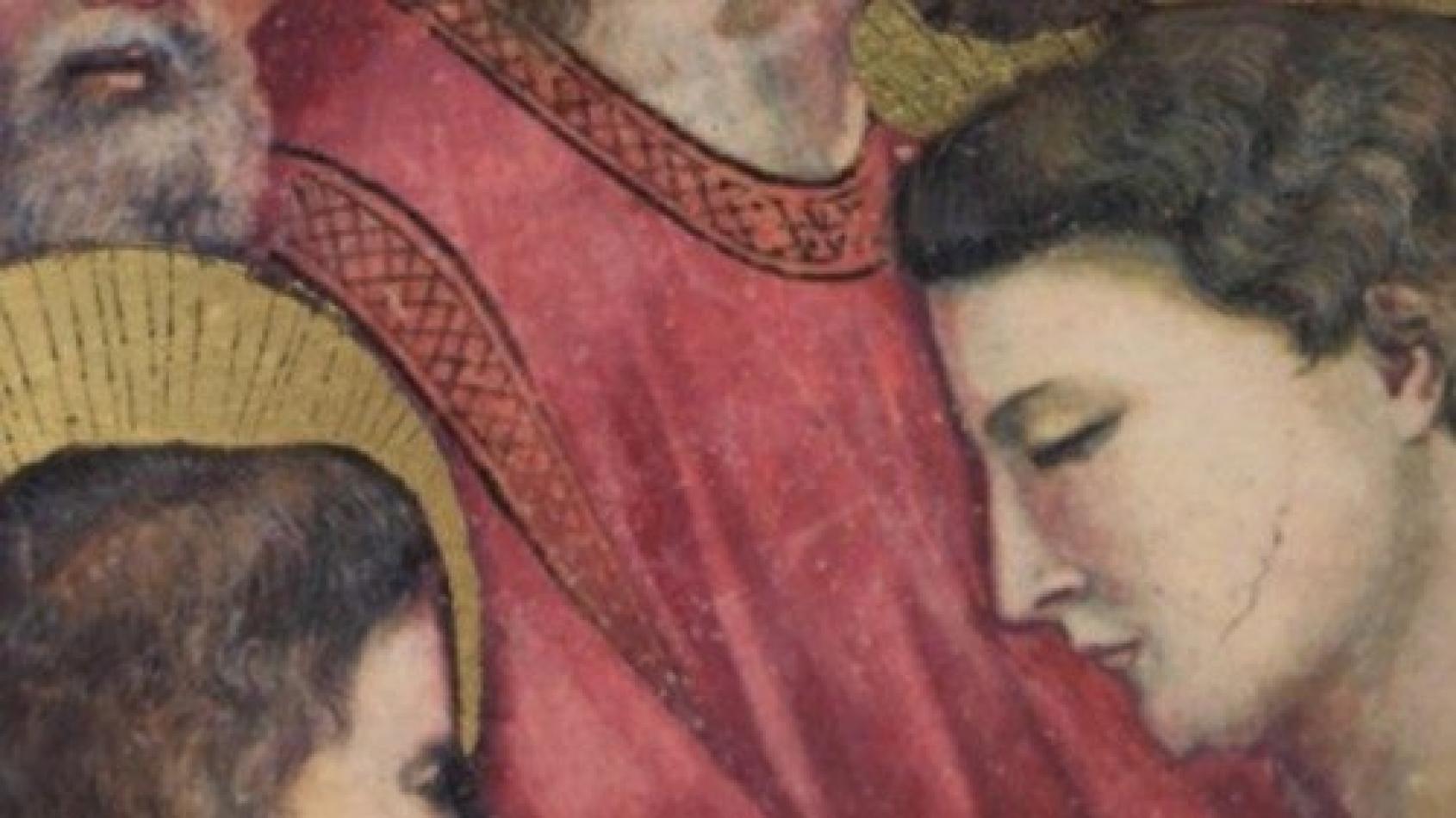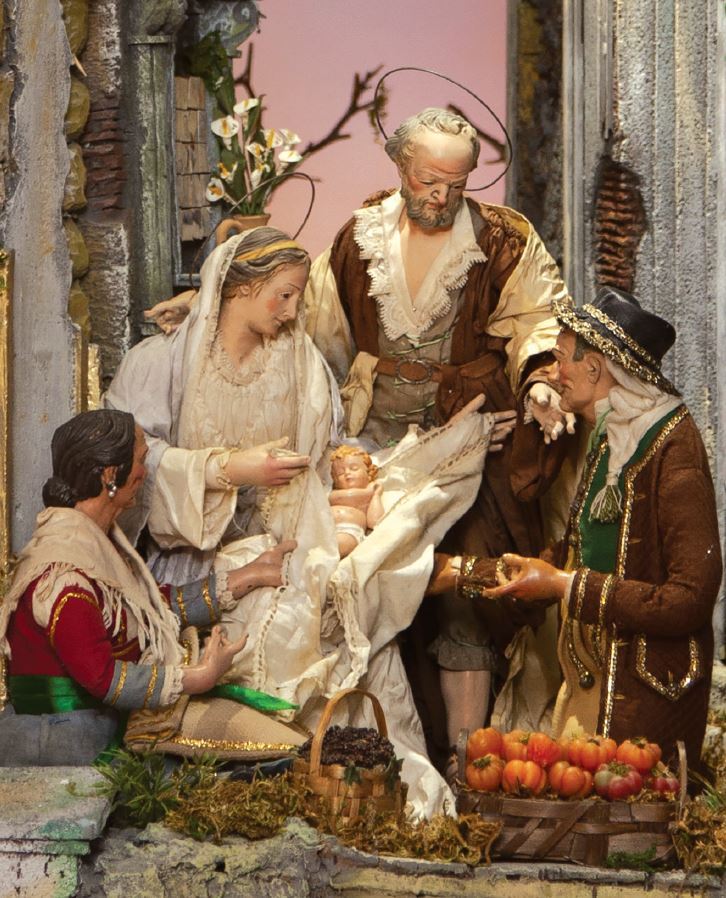Daniel Comboni
Comboni Missionaries
Institutional area
Other links
Newsletter
The liturgy for today, the Fourth and last Sunday of Advent, is characterized by the theme of closeness, God’s closeness to humanity. The Gospel passage (cf. Mt 1:18-24) shows us two people, the two people who, more than anyone else, were involved in this mystery of love: the Virgin Mary and her husband, Joseph. A mystery of love, the mystery of God’s closeness to humanity. (...)
Matthew 1:18-24
Closeness
The liturgy for today, the Fourth and last Sunday of Advent, is characterized by the theme of closeness, God’s closeness to humanity. The Gospel passage (cf. Mt 1:18-24) shows us two people, the two people who, more than anyone else, were involved in this mystery of love: the Virgin Mary and her husband, Joseph. A mystery of love, the mystery of God’s closeness to humanity.
Mary is presented in the light of the prophet who says: “Behold, a virgin shall conceive and bear a son” (v. 23). Matthew the Evangelist recognizes that this happened in Mary, who conceived Jesus through the Holy Spirit (cf. v. 18). The Son of God “comes” into her womb in order to become man, and she welcomes him. Thus, in a unique way, God drew near to mankind, taking on flesh through a woman: God drew near to us and took on flesh through a woman. To us too, in a different way, God draws near with his grace in order to enter our life and offer us the gift of his Son. What do we do? Do we welcome him, let him draw near, or do we reject him, push him away? As Mary, freely offering herself to the Lord of history, allowed him to change the destiny of mankind, so too can we, by welcoming Jesus and seeking to follow him each day, cooperate in his salvific plan for us and for the world. Mary thus appears to us as a model to look to and upon whose support we can count in our search for God, in our closeness to God, in thus allowing God to draw close to us and in our commitment to build the culture of love.
The other protagonist of today’s Gospel is Saint Joseph. The Evangelist highlights that alone, Joseph cannot explain to himself the event which he sees taking place before his eyes, namely, Mary’s pregnancy. Just then, in that moment of doubt, even anguish, God approaches him — him too — through his messenger and [Joseph] is enlightened about the nature of this maternity: “the child conceived in her is of the Holy Spirit” (cf. v. 20). Thus, in facing this extraordinary event, which surely gave rise to many questions in his heart, he trusts totally in God who has drawn near to him, and after his invitation, does not repudiate his betrothed, but takes her to him and takes Mary to wife. In accepting Mary, Joseph knowingly and lovingly receives Him who has been conceived in her through the wondrous work of God, for whom nothing is impossible. Joseph, a just and humble man (cf. v. 19), teaches us to always trust in God, who draws near to us: when God approaches us, we must entrust ourselves to him. Joseph teaches us to allow ourselves to be guided by Him with willing obedience.
These two figures, Mary and Joseph, who were the first to welcome Jesus through faith, introduce us to the mystery of Christmas. Mary helps us to assume an attitude of openness in order to welcome the Son of God into our concrete life, in our flesh. Joseph spurs us to always seek God’s will and to follow it with full trust. Both allow God to draw near to them.
“‘Behold, a virgin shall conceive and bear a son, and his name shall be called Emmanuel’, which means, God-with-us” (Mt 1:23). Thus the angel says: “the child shall be called Emmanuel, which means God-with-us”, in other words, God near to us. And to God who draws near, do I open the door — to the Lord — when I sense an interior inspiration, when I hear him ask me to do something more for others, when he calls me to pray?
God-with-us, God who draws near. This message of hope, which is fulfilled at Christmas, leads to fulfilment of the expectation of God in each one of us too, in all the Church, and in the many little ones whom the world scorns, but whom God also loves and to whom God draws near.
Pope Francis
Angelus 18 December 2016
w2.vatican.va
Jesus, the God with us
“Here’s how the birth of Jesus happened” thus today’s gospel’s passage begins. Instead of talking about the birth, it tells the announcement of the virginal motherhood of his wife to Joseph. Luke, unlike Matthew, narrates the announcement of the Archangel Gabriel to Mary and only marginally mentions Joseph.
The temptation to merge the two stories, as if they were reports of two journalists, is great but dangerous. It inevitably places us before difficult questions if not impossible to give an answer, as we will see shortly.
Both Luke and Matthew refer to actual facts, although difficult to define in details. They do not write pages of news but theology. They present Jesus, after Easter and in the light of the Spirit, as the Christian communities came to know him at the end of the first century.
Let’s see how Matthew structures his story and what message he wants to give.
At the time of Jesus, a marriage took place in two stages. The first consisted of a stipulated contract between the couple in front of their parents and two witnesses. After this signing, the boy and the girl were husband and wife, but did not live together. They spent a year apart during which they could not meet.
This interval allowed the two families to get to know each other and for the newlyweds to mature. In fact, they married very young, twelve or thirteen years for the girl, fifteen or sixteen for the boy. This was to be the age of Mary and Joseph.
After a year of waiting, a party would be organized. The bride would be conducted to the house of her husband and the two begin their life together.
It was during this interval that the annunciation to Mary and her pregnancy through the Holy Spirit took place. Matthew emphasizes this fact from the beginning of his story to avoid insinuating that Jesus may have been generated by the intervention of a man.
The spirit, in this story, does not represent the male element. Ruah (spirit in Hebrew is female) indicates a strength, a divine breath of the Creator. “When you send forth your spirit, they are created, and the face of the earth is renewed,” says the Psalmist (Ps 104:30). He probably thinks of the spirit of God that hovered over the waters at the beginning of the world (Gn 1:2).
The virginal conception that is even explicitly mentioned by Luke (Lk 1:26-39) is not intended to emphasize the moral superiority of Mary nor, still less, does it constitute a depreciation of sexuality. It is introduced to reveal a fundamental truth for the believer: Jesus is not only a man; he is from above and is the same Lord who has taken on human form. To help us understand this truth, Matthew and Luke harmoniously agree that God resorted to a creative act.
What happened next is not easy to establish and raises several questions. It seems incredible that Joseph, despite his righteousness, thought of taking drastic action against Mary, without even consulting her. How could he suspect that she had been unfaithful to him? In what sense was Joseph just? Was it because he wanted to separate himself from Mary? There was no law obliging divorce from an unfaithful wife. It would not have been a nice gesture on the part of Joseph even if it was done in secret. Why didn’t Mary say anything to Joseph about the Archangel Gabriel’s announcement? Or, if she had told him, why didn’t Joseph believe her?
Some say that Mary must have told Joseph that the child she was expecting was the Son of God. She had no reason to keep this secret from him and he had a right to know. Joseph’s doubt would then be not about the fidelity or infidelity of his spouse, but about his role in the situation. How could he give a name to a son who was not his? Would it not be interfering with God’s plan? Not knowing what to do, he decided to wait for God to make His will known.
While he was pondering these things, the Lord revealed His plan and the mission to which He called Joseph. He was to give Mary’s son the name, Jesus, thus becoming rightfully a member of his family. He would become a descendant of David according to the flesh, as St. Paul said in the second reading.
This explanation is interesting and contains elements certainly acceptable. For example, the fact that Joseph is called just because he had decided to step aside so as not to interpose obstacles to God’s plan that he could not understand. However, it is limited to be an assumption to which the Gospel text gives only a fragile foundation.
It is better not to grope for answers in the gospel to questions we legitimately ask ourselves. Because Matthew was not interested in satisfying our curiosity. All he wanted us to understand was this: the son of Mary is the promised heir to the throne of David announced by the prophets.
The conclusion of the story is solemn. The whole passage seems to have been written to prove the fulfillment of what was spoken by the Lord through the prophet: Behold a virgin shall conceive and bear a son who will be called Emmanuel, which means God with us (vv. 22-23).
We have already seen the literal meaning of this prophecy: the announcement of the birth of Ahaz’ son, Hezekiah. He was truly an Emmanuel, i.e. a sign that God protected his people and the dynasty of David, but did not answer all the expectations that had been placed in him. He did not even realize the promises of happiness, prosperity and peace described by Isaiah. He was not a wonderful counselor, an invincible warrior, an everlasting father, a prince of peace… (Is 9:5-6).
Here is what Matthew means: Jesus is the one who has fulfilled these prophecies. He is the son of the virgin announced by the prophet. He is really the Emmanuel, God with us. He will be given an everlasting kingdom, and he will fulfill all the hopes of Israel.
We are at the beginning of the Gospel of Matthew. The theme of Emmanuel also returns at the end of the book. In the last chapter it is said that, after the resurrection, Jesus manifested himself to the disciples on the Mount of Galilee. He sent them into the whole world to make disciples of all nations. Behold, I am with you (… Here I am the Emmanuel) always even to the end of this world (Mt 28:20). The reference to ‘God with us’ opens and closes all the work of Matthew because—the evangelist tells us—in Jesus, God has placed Himself, and remains always at man’s side.
This conclusion of the song returns to the theme of the virgin. We explained the meaning of the virginal conception of Mary. We want to recall other biblical implications of this term.
For us, ‘virgin’ means admirable, worthy of esteem. In the Bible, however, it has a different meaning. The virginity of a woman was appreciated before the wedding, but one who remained a virgin throughout her life showed only the inability to attract upon herself the look of a man. A married woman who had children is worthy of praise. The virgin was considered a tree without fruits, deserving pity (Is 56:3-6).
This term is often used figuratively in the Bible to indicate a despicable condition. The expression virgin Zion does not mean: pure, immaculate, spotless, but poor, Jerusalem devoid of life (Jer 31:4; 14:13). The land of Israel destroyed by the Assyrians is compared by Amos to a virgin who could not fulfill her dream of being a mother. “Virgin Israel is fallen, never to rise again! With none to help her up, abandoned, she lies upon her own land.” (Am 5:2). Even the bloody Babylon is cursed by the prophet: “You will be reduced to dust, O virgin Babylon” (Is 47:1).
And Mary? She speaks of herself as if she were the “virgin Zion” despised and worthless (He looked upon his servant in her lowliness) and recognizes that everything that happened to her is the work of the “Powerful” who has done great things in her (Lk 1:48-49). The Virgin Mary is the proof of the greatness and power of God, who alone is able to bring life to the barren womb.
When we celebrate the virginity of Mary, we rejoice because we verify in her what the Lord can do with virgins, with those who have no value, with those who offer him only one’s poverty and simplicity. From Mary, the Lord has drawn a masterpiece. An artist like him can do only masterpieces, regardless of the smallness and poverty of the material at his disposal. Every person is destined to become a masterpiece.
In this time of Advent, the Virgin Mary invites us to contemplate what the Lord has done for her and believe in the victory of life even where only signs of death are seen.
The term virgin in the Bible also assumes a more metaphorical meaning: the person who loves with an undivided heart. The unfaithfulness of Israel is likened to prostitution (Jer 5:7). Its contamination with idols is considered adultery, a division of the heart between the Lord, the one husband, and the idols of the nations, her lovers (Hos 2).
The virginity is the symbol of total love for the Lord. It is in this sense that Paul uses the term when he writes to the Corinthians: “I share the jealousy of God for you, for I have promised you in marriage to Christ, as the only spouse, to present you to Him as a pure virgin” (2 Cor 11:2).
Mary has certainly realized to perfection even this ideal of virginity. For every Christian, she is the supreme model of total and undivided love to God.
Fernando Armellini
Italian missionary and biblical scholar
https://sundaycommentaries.wordpress.com






